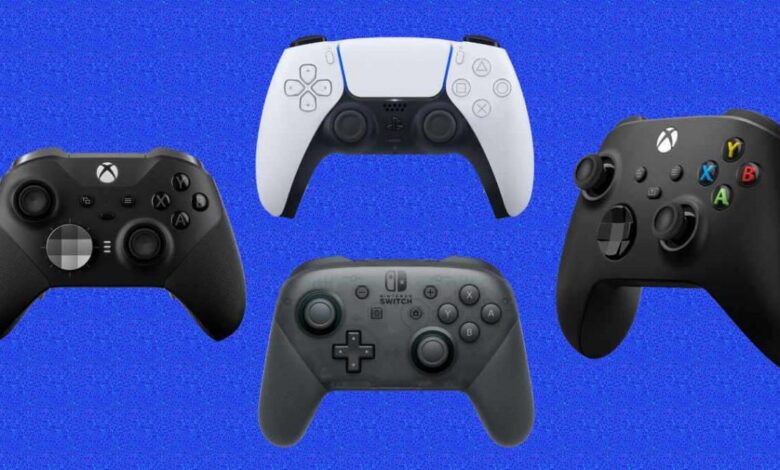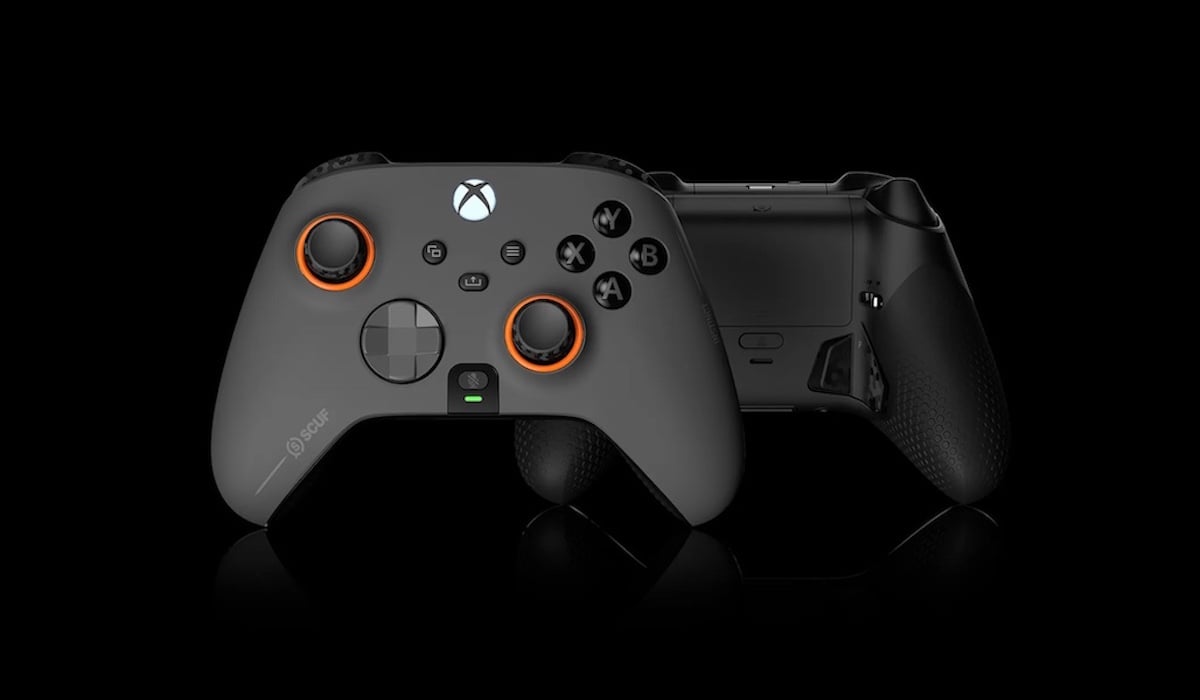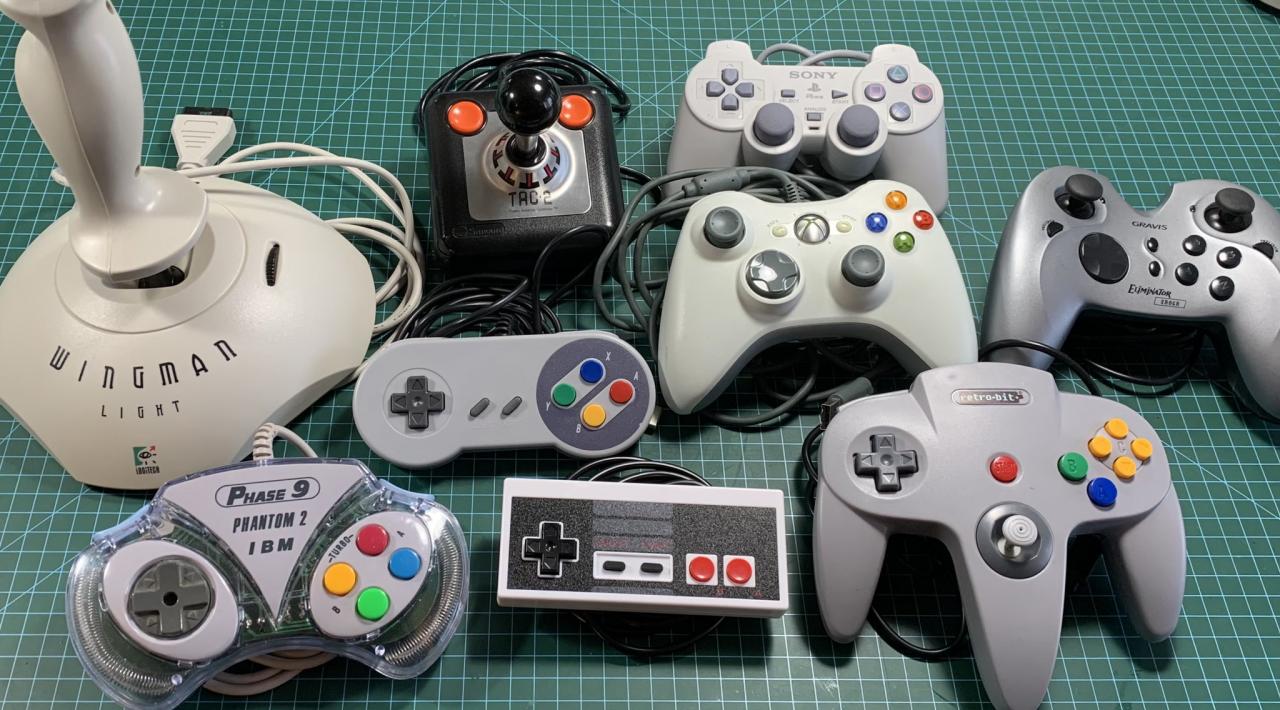Gamepads Are Optional: The Future of Interactive Control

For decades, the gamepad—that iconic, ergonomic piece of plastic adorned with twin sticks and a dozen buttons—has been the undisputed symbol and primary interface of video gaming.
From the simple two-button setup of the NES to the complex, vibrating architecture of modern controllers, it has served as the essential bridge between the player’s intent and the digital world.
Yet, as technology progresses exponentially, this familiar peripheral is beginning to shift from an absolute necessity to a versatile option. We are entering an era where the act of playing is being freed from a single, mandatory input device.
The future of gaming control is less about one perfect controller and more about a diverse ecosystem of interfaces that cater to every game, every person, and every physical circumstance.
This transformation is driven by several converging technologies, including the rise of mobile gaming, the maturity of cloud streaming, advancements in artificial intelligence (AI), and a strong push toward accessibility.
These innovations are dismantling the traditional barriers of entry, making the immersive world of video games controllable by everything from the sound of your voice to the movement of your eyes. The reign of the mandatory controller is gracefully giving way to a more personalized and ubiquitous era of interaction.
The Pillars of the Controller’s Decline

The shift away from mandatory gamepads is not a sudden revolution but a gradual evolution fueled by technical maturity in non-traditional input methods. Several key factors are eroding the controller’s dominance.
The Rise of the Casual and Mobile Ecosystems
The sheer volume of players who game primarily on mobile devices or use cloud services has massively diluted the necessity of the console-style gamepad.
A. Touchscreen Superiority in Volume
The world’s largest gaming audience plays on smartphones and tablets. For these users, the touchscreen is not a compromise; it is the default, preferred interface.
- A. Intuitive Access: Touch controls are instantly accessible and require no external hardware purchase or setup, making them the zero-friction entry point for billions of people.
- B. Genre Optimization: Many popular mobile genres, from match-three puzzle games to city builders and real-time strategy games, are fundamentally designed around the precision and speed of touch input, rendering a physical controller superfluous.
- C. Gestural Commands: Touchscreens easily integrate complex gestural inputs—swiping, pinching, multi-touch—that a traditional gamepad simply cannot replicate effectively without complex button combinations.
B. Cloud Streaming and Universal Screens
Cloud gaming services like Xbox Cloud Gaming and GeForce NOW enable high-fidelity console and PC games to run on virtually any screen. This portability demands flexible input.
- A. Virtual Controllers: To facilitate play on non-controller devices (like a standard smart TV or a budget smartphone), services often integrate high-quality, customizable virtual touch controllers overlaid on the screen.
- B. Seamless Adaptability: Cloud gaming fundamentally requires the game to accept input from a wide variety of devices—from a high-end gamepad on a PC to a pair of basic earbuds on a phone—driving developers to create flexible control mapping from the outset.
The Technological Advancements in Sensing
Beyond standard consumer devices, cutting-edge technology is creating entirely new, more natural, and less cumbersome ways to interact with games.
A. Voice Commands and AI Assistants
With the maturity of AI-powered speech recognition, voice input is transitioning from a novelty into a powerful command tool.
- A. Non-Critical Actions: Voice commands are perfect for managing inventory, issuing strategic orders to non-player characters (NPCs), adjusting settings, or managing non-critical in-game systems, freeing up hands for movement and primary combat actions.
- B. Enhanced Accessibility: For players with limited mobility, voice input can act as the sole or primary interface, issuing complex commands far faster than navigating menus with restricted physical movement.
- C. Integrated AI Helpers: Future games may feature dedicated AI companions that respond naturally to voice queries, offering hints, managing resources, or even adjusting difficulty in real-time.
B. Eye-Tracking and Gaze Input
Advanced sensor technology allows the game to interpret the player’s gaze as a command.
- A. Target Acquisition: In shooters and aiming-heavy games, eye-tracking allows the system to instantly acquire a target simply by the player looking at it, streamlining the manual aiming process managed by a stick.
- B. Menu Navigation: Navigating complex interfaces, skill trees, or maps can be done instantly by looking at the desired icon, then confirming with a simple blink or button press.
- C. Immersive Experiences: In adventure or horror games, the system can track where the player is looking to trigger environmental events or dynamic camera shifts, creating a deeper, more personalized sense of dread or surprise.
The Accessibility Imperative: Designing for Everyone

The most profound philosophical driver moving away from mandatory standard gamepads is the push for accessibility. Designing for players with diverse needs is pushing the industry to create interfaces that are modular, customizable, and adaptable, thereby benefiting all players.
Beyond the Standard Controller
The standard gamepad, with its symmetrical layout and requirement for fine motor control in all ten fingers, remains a huge barrier for countless individuals. The future of input is inherently personalized.
A. Modular and Specialized Controllers
The shift is toward modularity, allowing players to build the input device that perfectly suits their abilities and the game they are playing.
- A. Adaptive Controllers: Products like the Xbox Adaptive Controller (XAC) provide a central hub that allows players to plug in various switches, buttons, and specialized input devices (like sip-and-puff controls or large, easy-to-press buttons). This is the purest expression of the “gamepad optional” philosophy.
- B. Single-Handed Solutions: Specialized grips and attachments allow full gamepad functionality to be mapped to a single hand for players with the use of only one limb.
- C. Foot Pedals and Switches: External switches placed on the floor allow players to map secondary actions (like reloading, jumping, or crouching) to foot movements, freeing up crucial hand buttons for primary combat and movement.
B. Biometric and Physiological Input
Future input devices will increasingly utilize the body’s own signals for control, requiring minimal conscious physical effort.
- A. Myoelectric Sensors: Wearable sensors can read muscle activity (electromyography, or EMG) to detect the player’s intent, even without full movement. A slight tensing of the forearm, for example, could be translated into a complex in-game command.
- B. Brain-Computer Interfaces (BCIs): While still in the early stages, BCIs represent the ultimate controller-optional future. They would allow players to directly control some game elements (e.g., movement, telekinesis, menu navigation) through focused thought patterns, creating a truly direct link between mind and game.
C. Control Remapping and Cross-Input Schemes
Modern game design is now expected to offer robust remapping tools that allow players to assign any action to virtually any available input source, whether it’s a traditional button, a foot pedal, or a voice command. This layered input scheme makes the standard controller just one piece of a much larger, customized control panel.
Emerging and Experimental Input Methods
Innovation is constantly driving the creation of entirely new ways to interact, often blurring the lines between the player’s physical body and the digital avatar.
The Blurring of Reality and Control
A. Gesture and Motion Control
Motion controls, famously popularized by the Nintendo Wii, are experiencing a resurgence with more accurate, low-latency tracking systems.
- A. Full-Body Tracking: Systems used by Virtual Reality (VR) and Augmented Reality (AR) headsets now track full-body skeletal movement, allowing the player’s real-world actions (punching, ducking, dancing) to translate directly to the game. This transforms the player’s whole body into the controller.
- B. Hand Tracking: Advanced cameras can track the subtle movements of the hands and fingers without requiring a handheld device, making actions like picking up virtual objects, throwing spells, or typing feel incredibly natural and immediate.
B. Augmented Reality Interfaces
AR technology, projected through specialized glasses or mobile devices, promises to turn the real world into the interface.
- A. Contextual Commands: Players could tap a real-world object to cast a spell in an overlaid AR game, or physically walk to a location to trigger a digital event, making the environment itself part of the control scheme.
- B. Heads-Up Display (HUD) Interaction: Virtual buttons and menu options can be integrated directly into the player’s field of view, allowing for interaction via a simple head nod or glance, eliminating the need for a physical device to navigate interfaces.
C. The Social Controller
Some games are designed to be controlled not by one person, but by a crowd or community.
- A. Twitch Integration: Streaming platforms allow viewers to vote on in-game events, spawn enemies, or send resources to the player, turning the collective audience into a form of distributed, external controller.
- B. Companion Apps: Mobile companion applications allow players to manage resources, check maps, or adjust inventory on a secondary screen (their phone), offloading complex menu navigation from the main input device, whether that device is a gamepad or not.
The Controller’s Enduring Legacy and Evolved Role
While the standard gamepad may soon cease to be mandatory, it will certainly not disappear. Instead, it will evolve into a specialized tool, appreciated for its enduring strengths in specific contexts.
The Core Strengths of the Traditional Gamepad
For all the promise of new technology, the traditional gamepad retains several key advantages that ensure its continued relevance:
A. Tactile Feedback and Muscle Memory
The physical click of a button, the resistance of a trigger, and the textured feel of a thumbstick provide immediate, unmistakable tactile confirmation of an action.
- A. Precision and Consistency: The consistent physical positioning of buttons allows for complex actions to be executed reliably through pure muscle memory, making it the superior choice for high-speed action and fighting games.
- B. Low Fatigue: The ergonomic design is optimized for long, hours-long sessions, offering comfort and control that many experimental inputs cannot yet match.
B. Universal Language
The layout of modern controllers (ABXY, triggers, thumbsticks) has become a global, universal gaming language.
- A. Developer Standard: Game developers still use the gamepad as the default input standard because its structure allows them to map complex controls onto a reliable, fixed template.
- B. Familiarity: For millions of veteran gamers, the controller is an instinctual extension of their will. They will continue to choose it for the sheer familiarity and reliability it offers.
C. Dedicated Hardware for Dedicated Play
In the living room environment, the controller provides a simple, dedicated, and durable solution for shared couch co-op and immersive solo play, without requiring the setup, movement, or power draw of full-body sensors or VR headsets. It remains the best compromise between complexity and convenience for the core immersive triple-Aexperience.
Conclusion
The notion that gamepads will become optional isn’t a prediction of their demise; it’s a celebration of gaming’s liberation.
The industry is moving toward a highly modular and personalized control landscape, where the player is empowered to choose the interface that best suits their body, environment, and the specific demands of the game they are engaging with.
This shift is transformative because it prioritizes the player experience over hardware convenience. The mandatory controller historically forced a one-size-fits-all approach, excluding millions of potential players due to physical constraints or simply because they preferred the intuitiveness of a touchscreen or the command power of their voice.
By making the controller optional, the industry simultaneously embraces the massive mobile market, removes physical barriers for disabled players, and opens the door to revolutionary, immersive interfaces like true full-body tracking and advanced biometric control.
The impact is most profound on accessibility. The development of adaptive controllers and the integration of advanced control remapping into game design have set a moral and technical precedent that will not be reversed.
Every future game will be judged not just on its graphics or gameplay, but on its flexibility—how many different ways it allows a person to interact with the world.
This imperative for inclusivity drives innovation that benefits everyone; the AI systems developed to help a player with limited mobility, for instance, can also be used by a fully able player to streamline complex tasks in a huge role-playing game.
Ultimately, the future of gaming input is not a zero-sum game between the traditional gamepad and new technologies. Instead, the gamepad will take its place as a specialized, high-precision tool—the choice of the competitive player or the dedicated immersive enthusiast—while the wider ecosystem thrives on the variety offered by touch, voice, gesture, and even thought.
The most exciting outcome is that the primary barrier to entry—the specialized hardware—is crumbling. When every screen becomes a console and every voice a controller, gaming truly becomes a universal medium, unconstrained by the limits of a single peripheral design.
The optional gamepad signals a far more inclusive, innovative, and limitless horizon for interactive entertainment.